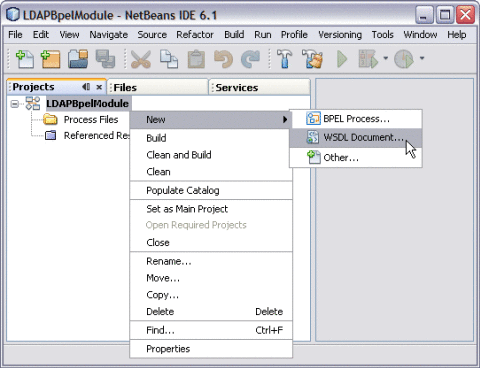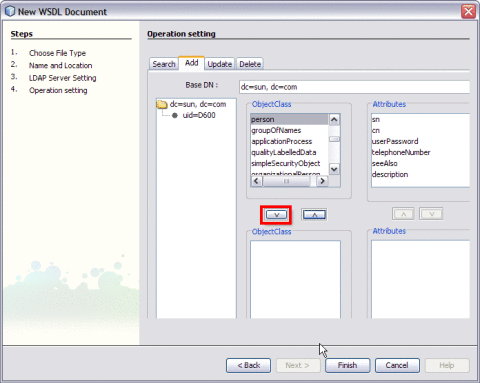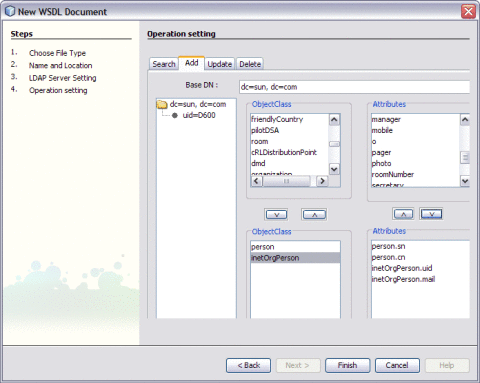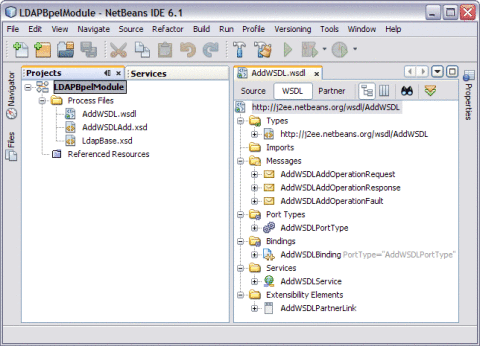 To Create a WSDL Document : Add Feature
To Create a WSDL Document : Add Feature
-
Expand the BPEL Module project node in the Projects tab.
For example, LDAPBpelModule
-
Right-click the project node or Process Files node. Select New —> WSDL Document...

This opens the New WSDL Document wizard.
-
Type the File Name in the File Name field.
For example, AddWSDL.wsdl
-
Select Concrete WSDL Document.
-
Choose the Binding — LDAP from the drop-down list.
-
Choose any one of the following Types from the drop-down list.
-
From LDAP Server
-
From LDIF File
-
-
Choose Type — From LDAP Server from the drop-down list.

-
Click Next.
-
Enter the Root DN and LDAP Server URL.
DN: base object entry search relative to
For example, the Root DN is dc=sun,dc=com and LDAP Server URL is ldap://server ip address:port number.
-
Click Advanced.

This action displays the Advanced Login dialog box.

For example,
-
Principal: cn=Manager,dc=sun,dc=com
-
Credentials: *******
-
-
Click OK to close the Advanced Login Dialog.
-
Click Next.
The New WSDL Document — Operation Setting dialog box opens.
Note –You can perform any one of following operations.
-
Search
-
Add
-
Update
-
Delete
-
-
Click the Add tab.

Select the following Object Class:
Click the down arrow to move them from the top-left pane to the bottom-left pane.
Note –The attributes related to the schema are selected.
Each schema is made up of a set of attributes.
For example,
-
person — person.sn and person.cn
-
inetOrgPerson — inetOrgPerson.uid and inetOrgPerson.mail
They are represented as follows:
-
sn — Surname
-
cn — Common Name
-
uid — Unique id
-
mail — Email
schemaname.Attributename
-
Note –Use the down arrow to move the selected Object Class or Attributes from the top-left pane to the bottom-left pane. Use this to also move from the top-right pane to the bottom-right pane.

-
-
Set any one of the Attributes to Relative Distinguished Name (RDN).
A Relative Distinguished Name (RDN) is a component of the distinguished name.
For example, cn=John Doe, ou=People is a RDN relative to the root RDN dc=sun.com.

For example, Set inetOrgPerson.uid = RDN
-
Click Finish.
The illustration is as shown.

A tree structure is formed as follows:
- © 2010, Oracle Corporation and/or its affiliates
